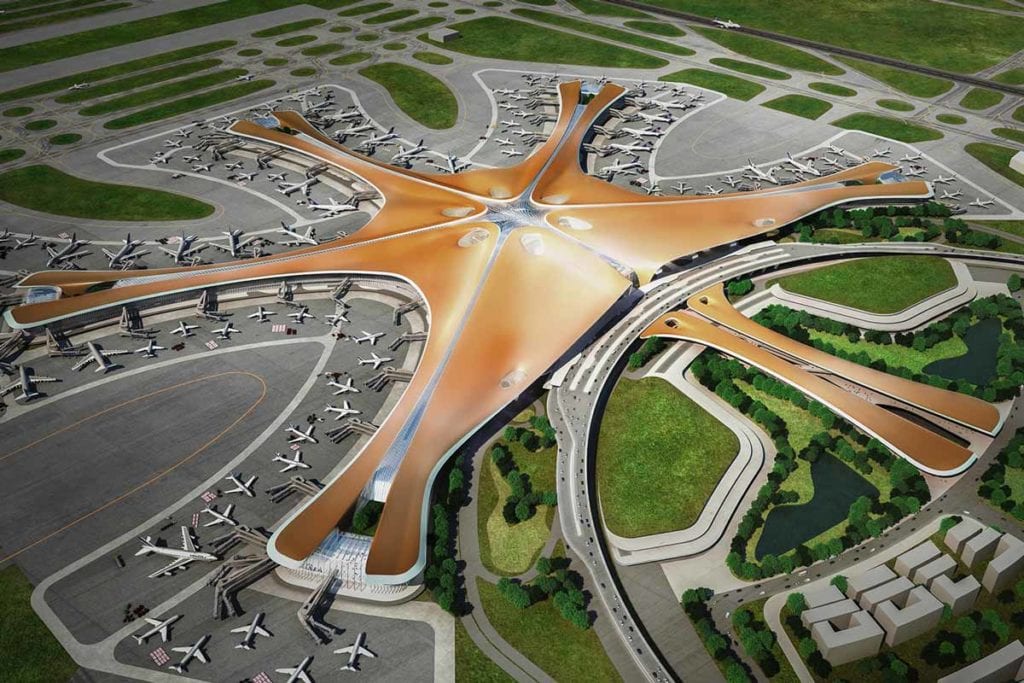
Airports, aviation and climate
The airports and aviation sector is actively responding to the challenge of mitigating climate change and has made substantial commitments to achieve their ambitious targets1. The immediate challenge lies in significantly reducing greenhouse gas emissions while retaining the economic benefits, growth and connectivity that aviation facilitates.
Buro Happold is committed to reducing our own carbon footprint,2 as well as using our expertise to achieve environmentally sustainable solutions within the aviation sector. The wider stakeholder community also has a crucial role to play. This includes sustainable fuel technology developers, airline and airport operators, investors, local government and international regulatory institutions.
Climate change has rightfully emerged as the primary focus of governments and industry policy makers around the world. The recent COP26’s International Aviation Climate Ambition Coalition saw world leaders issue a statement of intent and policy agreement with a coordinated strategy to achieve net zero for international aviation1.
In support, globally representative industry bodies such as the International Air Travel Association (IATA)3 and the Airports Council International (ACI)4 have already published emission reduction targets that are supported by clearly defined milestones and pathways to achieve these agreed objectives.
Aircraft and engine manufacturers are in a race against time to propel the development of sustainable fuel technologies that meet net zero carbon emission targets in line with global agreements. Alongside the development of sustainable aviation fuels (SAF), significant investment is being made in the advancement of electrical, hybrid and hydrogen energy propulsion systems. This will undoubtedly transform the industry over the next few decades.
Commercial aviation is known to contribute to an estimated 2.5% of global carbon emissions and up to 3.5% of all greenhouse gases released into the atmosphere every year5. On the other hand it supports approximately 87.7 million jobs globally and $3.5 trillion of global GDP (a third of goods traded around the globe)6.
Air connectivity provides access to global markets for developing nations and supports social value and upliftment opportunities through unrivalled access to all corners of the world. Aviation facilitates the development of skills, it enables tourism, provides community lifelines and rapid disaster response. The industry also notably plays a key role as an enabler in meeting many of the universally accepted United Nations Sustainable Development Goals7.
The typical legacy design of terminals, landside and airside infrastructure can contain large amounts of embodied carbon. Our Buro Happold teams know that any new development of airport and terminal facilities should include the following from inception:
- optimal embodied carbon content
- recyclability and energy efficiency of operation
- recyclability and energy efficiency of construction.
Buro Happold is well placed to support airport clients on their own respective journeys to net zero carbon and reduced greenhouse gas emissions. If you would like to know more about our airports design service offer, please get in touch with Global Aviator Sector Leader Karl Lyndon.
References
- COP26 declaration: International Aviation Climate Ambition Coalition: https://www.gov.uk/government/publications/cop-26-declaration-international-aviation-climate-ambition-coalition/cop-26-declaration-international-aviation-climate-ambition-coalition
- Buro Happold Sustainability Report p.4: https://www.burohappold.com/publications/global-sustainability-report-2021/.
- IATA – Fly Net Zero: https://www.iata.org/en/programs/environment/flynetzero/ Global civil aviation operations will achieve net-zero carbon emissions by 2050, supported by accelerated efficiency measures, energy transition and innovation across the aviation sector and in partnership with Governments around the world.
- ACI – Sustainability Strategy Report 2021 https://aci.aero/?s=sustainability
- Figures based on: https://ourworldindata.org/ghg-emissions-by-sector but references 2016 data, need update.
Aviation (1.9%): emissions from passenger travel and freight, and domestic and international aviation. 81% of aviation emissions come from passenger travel; and 19% from freight.7 From passenger aviation, 60% of emissions come from international travel, and 40% from domestic. - Aviation Benefits: https://aviationbenefits.org/economic-growth/
- UN Sustainable Development Goals: https://sdgs.un.org/goals




